tin tức nổi bật
-
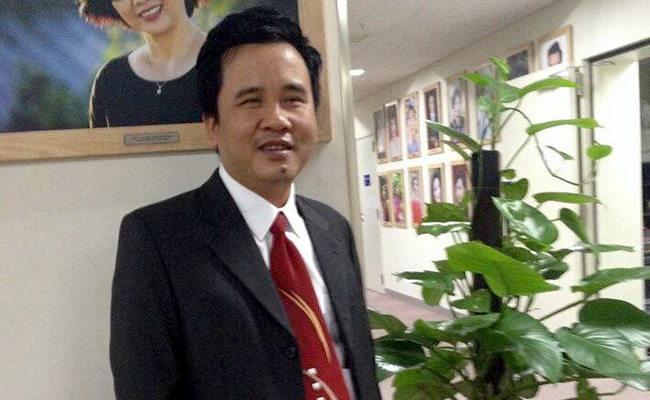 Hoàng Xuân Hạnh - Hoàng Kim: Doanh nhân người khiếm thị được biểu dương năm 2018
Hoàng Xuân Hạnh - Hoàng Kim: Doanh nhân người khiếm thị được biểu dương năm 2018
-
 Tôi mách bạn 6 Giải pháp hàng đầu để trở thành chuyên gia trong trị liệu: chữa bệnh và làm đẹp
Tôi mách bạn 6 Giải pháp hàng đầu để trở thành chuyên gia trong trị liệu: chữa bệnh và làm đẹp
-
 Hoàng Kim Massage thông kinh lạc toàn thân thải độc tố cơ thể, phục hồi sức khỏe, thổi bay những cơn đau bằng Công nghệ điện sinh học DDS
Hoàng Kim Massage thông kinh lạc toàn thân thải độc tố cơ thể, phục hồi sức khỏe, thổi bay những cơn đau bằng Công nghệ điện sinh học DDS
-
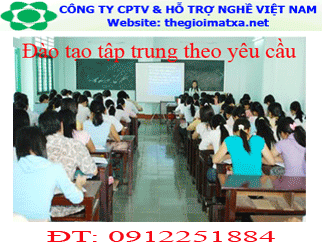 Tẩm quất người mù Hoàng Kim tổ chức lớp Tập huấn kỹ thuật massage làm đẹp da mặt, massage giảm mỡ bụng cạo gió, giác hơi ống trúc cho nhân viên
Tẩm quất người mù Hoàng Kim tổ chức lớp Tập huấn kỹ thuật massage làm đẹp da mặt, massage giảm mỡ bụng cạo gió, giác hơi ống trúc cho nhân viên
-
Góp máy tính cho người khuyết tật
-
 Chương trình tài trợ 1000 máy xông hơi cho thành viên hội người mù việt nam
Chương trình tài trợ 1000 máy xông hơi cho thành viên hội người mù việt nam
-
.jpg) Những ngón tay dệt nên thần thoại
Những ngón tay dệt nên thần thoại
-
 Quyển sách: Món ngon ngày tết
Quyển sách: Món ngon ngày tết
-
 Giám đốc Trung tâm Hoàng Kim được ghi nhận là thành viên tích cực của Hiệp hội thương mại điện tử Việt Nam (năm 2012)
Giám đốc Trung tâm Hoàng Kim được ghi nhận là thành viên tích cực của Hiệp hội thương mại điện tử Việt Nam (năm 2012)
-
video người mù vượt qua bóng tối (P1) (năm 2012)
-
 Giới thiệu 2: Đĩa âm nhạc tẩm quất người mù Hoàng Kim
Giới thiệu 2: Đĩa âm nhạc tẩm quất người mù Hoàng Kim
-
Tuyển dụng nhân viên làm tẩm quất ở Hoàng Kim
-
 Người giàu không ở... hai con mắt
Người giàu không ở... hai con mắt
-
Biển tẩm quất người mù bị trịch thu vì ảnh hưởng đến làng văn hóa
-
 Những ngón đàn xuyên suốt màn đêm
Những ngón đàn xuyên suốt màn đêm
-
.jpg) Hoàng kim trước thềm xuân mới.
Hoàng kim trước thềm xuân mới.
-
 Massage của người khiếm thị từ góc nhìn của một người “ngoại đạo”
Massage của người khiếm thị từ góc nhìn của một người “ngoại đạo”
-
 Xoa xát mắt để phòng cận thị và hoa mắt ở tuổi già
Xoa xát mắt để phòng cận thị và hoa mắt ở tuổi già

UNIT5: PUBLIC ADMINISTRATION REFORM (1)
- REVIEW OF UNIT 4
Activity 1: Vocabulary revision: civil service management
You have learned a lot about civil service management in Unit 4. This activity will help you to rememner much of the contents. Write in three minutes as many terms related to the topic as you can. Then compare with your deskmate!
Activity 2: In groups of five, discuss the following questions and then report your final answers to the class:
- What is a reform?
- What is a public administration reform?
- What do you know about the Public Administration Reform in Vietnam ( When did it start? How long does/ did it last? What were/ are its purposes? Etc.)
- TEXTS AND PRACTICE
Activity 3: Pre- reading of Text 1
Make sure you know the meaning of the following words and phrases. Use your dictionary or ask your friends/ your teacher if necessary and then fill in the gaps:
|
Boundaries |
Centralization of authority |
|
Parastatal sector |
Demands |
|
Inducement |
Malfunctioning |
|
Refashioning |
Spontaneous |
- To some extent, political policies can be considered sa policical………………
- Vietnamhas………………. With China, Laos and Cambodia.
- Some authors use the term “……………………..” to refer to the enterprise sector.
- The redesigning of the organizations of the state can be seen as………………..
- An agency that does not function well in line with its duties may be said to be………………….
- …………………….occurs when all the power is concentrated in someone or at a certain level of government.
- They have little………………………to work harder.
- A ………………….process is a natural, not a forced process.
Activity 4: Reading comprehension
Now skim through the following text and write down what you think is the topic
TOPIC:
…………………………………………………………………………………………..
- Over the past forty year widespread dissatisfaction with the performance of public administrations, cutting across national, socio-economic, and idelolgical boundaries, has made the need for administrative reform a universal theme. Problem such as the excessive centralization of authority, the over-expenditure of bureaucracy, the lack of adequate controls over bureaucratic power, including the proper management and control of the parastatal sector, and the lack of proper co-ordination between central and local government units were so serious that they made administrative reform imperative. The reform agenda has varied through the development decades but it has always been there in the reality. There has been a “radical transformation in the ideas and approaches to administrative reform and it is now regarded as a complex and diversified body of doctrine of very great importance. The theory of administrative reform represents the meeting point and culmination of all administrative theories expounded up to now” (Poudyal, 1989). In almost every country of the world, an expanding capability for converting political demands into administrative action is, after all, a fundamental state function. Although there have been a number of attempts to define administrative structures or processes to improve administrative output or related characteristics.
- Even though administrative reform, as a term, has been interpreted differently by different authors, it has acquired widespread usage and recognition in matters relating to government and public administration. If there was a generally accepter definition of administrative reform, there would not have been so much debate about the topic. Some decades ago, Caiden (1969) defined it as “the artificial inducement of administrative transformation, against resistance”. He distinguished administrative reform from administrative change that is a self- adjusting response to fluctuating conditions saying that the need for the former arises from the latter because of the malfunctioning of the natural processes of administrative change. In the same vein, Saxena (1980) quoted Dror who defined administrative reform as a directed change of the main features of an administrative system, and further clarified that change must either (a) be at least of medium comprehensiveness plus high innovativeness; or (b) be of high comprehensiveness plus at least medium innovativeness. The emphasis then is in reform to bring about necessary changes in public bureaucracies. Administrative reform, in this context, means and includes “ those efforts which call for or lead to major changes in the bureaucratic system of a country intended to transform the existing and established practices, behaviours and structures within it” (Khan 1980: 57).
- By definition, administrative reform is concerned with fundamental as opposed to cosmetic change. It involves the deliberate refashioning of the organizations, institutions, structures, procedures and rules and regulations of the state and its bureaucracy. It is also concerned with significant changes in the attitudes and behavior of those involved in the administration of public affairs. As such, administrative reform is far from being an automatic or spontaneous process. It must be deliberately induced and, given the inherent human tendency to resist change, those responsible for its implementation must be dedicated and committed to its success. Furthermore, as Rweyemamu (1984) rightly wrote:“Public administration functions within a political environment. It is influenced by, and influenced, the political process of which it is part. Political environment means the behavioural consequences of social, economic, political and cultural forces in society. There forces interact with external forces to produce conditions that determine the patterns of behavior of the polity, including the bureaucracy”, so that it is important to place administrative reform in the general context of interactions among different elements and relationships.
Activity 5: Comprehension questions
- What made administrative reform imperative?
- What does the notion of administrative reform usually include?
- What was the definition of administrative reform given by Caiden? How did he distinguish between administrative reform and administrative change?
- What might be the core of administrative reform efforts?
- In what way does administrative reform differ from cosmetic change?
- Why is it possible to say that administrative reform is far from being an automatic or spontaneous process?
Activity 6: What is the main idea?
Carefully read the text once more, then summarize each paragraph in 1 or 2 sentences:
Paragraph 1 (three minutes): ..............................................................................................................................................................................................................................................................................................................................................................................................................................
Paragraph 2 (three minutes): ..............................................................................................................................................................................................................................................................................................................................................................................................................................
Paragraph 3 (three minutes): ..............................................................................................................................................................................................................................................................................................................................................................................................................................
Activity 7: Word study
Pair up the words or phrases so that they make logical units:
|
|
|
|
|
|
|
|
|
|
|
|
|
|
Activity 8: Pre- reading of Text 2
- Discuss the following questions in groups, then choose a representative of each group to present the results before the whole class:
- When did the public administration reform programme in Vietnam begin?
- What are the main elements of the reform programme?
- Match the words or phrases on the right with their Vietnamese equivalent meanings on the left:
|
|
|
|
|
|
|
|
|
|
|
|
|
|
|
|
- Read the words or phrases above out loud.
Activity 9: Reading comprehension
Now read the following text carefully:
An Overview of Public Administration Reform in Vietnam
- Since 1986 the Communist Party and the Government of Vietnam have initiated the overall renovation of the country (doi moi) with the focus on economic reform. Initial results in economic development have been achieved and these have helped to improve living standards of the people. However, the country is still faced with a number of weaknesses such as a low level of internal economic accumulation, an insufficiency of experience in management of the transition to a market economic, an inappropriate machinery for a market economic, and an inadequate capacity of the personnel in relation to the change of the society. The success of the economic reform has revealed the weaknesses of the state administration and created an urgent requirement to launch a public administration reform programme (PAR) and link it with economic reform, considering PAR as the focus of the process to build and perfect the State of the SRV. The programme was officially announced in early 1995. It is recognised that if the administrative system is not reformed, high growth rate of economic development will not be achieved.
- The objective of PAR in Vietnam is to “build a streamlined, capable public administration that uses properly the authority and is gradually modernized to manage effectively and efficiently the operation of the State, promoting the healthy development of the society, in the right direction and serving the life of the people building the lifestyle and working style in accordance with laws in the society”
- The PAR in Vietnam includes three major components as follows:
- The reform of administrative institutions focuses on the development and perfection of the socialist democracy, ensuring human rights and the rights of the people , serving properly the needs of the material as well as spiritual life of the public. The citizens are seen as the central focus of the public a diministration in a civil society. The reform also aims at promoting and serving economic and financial reforms.
- The reform of state administrative machinery concentrates on building a strong machinery to carry out the executive function, in its relationships of co-ordination and distribution with the legislature and judiciary; strengthening and unifying the central elements of government; and promoting the initiative and creativity of local authorities, combining sectoral and area management in an effective manner.
- The reform of the civil service aims at building a contingent of cadres and civil servants which are properly qualified for their tasks, considering this as the first priority in the PAR.
- PAR is a complex and difficult task, since it touches upon the machinery, people, viewpoints and working methods as well as the norms of civil servants. PAR is not a single, isolated operation. It is a continuos task in accordance with the changing situation, making use of new opportunities, and facing new challenges. It is possible that the main objectives may remain unchanged while detailed contents and measures should be flexible to respond to realities. The PAR in Vietnam is only at the beginning of a long road. Much has to be done to achieve the goals of implementation of socio-economic strategy up to the year 2010 in the country. Alongside the continuation of economic and political renovation, PAR has an extremely important role in enhancing the scientific level and the practical capacity required to build a modern public administration in a democratic regime and a market economy; a public administration that is deeply imbued with national traditions while informed by best practices of advanced public administration in the region and elsewhere in the world.
Activity 10: Multiple choice
Read the following sentences and then decide which of the four alternatives a, b, c or d best fits them:
- Since 1986 the Communist Party and the Government of Vietnam have initiated………………………………….of the country.
- Economic reform
- Public administration reform
- The overall renovation
- Legislative reform
- Despite the initial achievements, the country is still faced with a number of weaknesses such as………………………………………..
- a low level of internal economic accumulation
- an inappropriate machinery for a market economy
- an inadequate capacity of the personnel involved
- all of the above
- The public administration programme was officially announced in early 1995 by ……………………………….
- The Government of Vietnam
- The National Assembly
- The Communist Party of Vietnam
- The State
- ……………………. Have been the major components of the public administration reform programme in our country from 1995 to 2000.
- The reform of the civil service
- The reform of administrative institutions and state administrative machinery
- The reform of administrative procedures
- Borth b and a
- The public administration reform in Vietnam is a conperhensive process because it ………………………….
- Is a continuous task in accordance with the changing situation
- Is an ad hoc solution to deal with administrative abstacles
- Touches upon the machinery, people, viewpoints and working methods as well as norms of civil servants
- Is not a single, isolated operation
Ý kiến độc giả
Các tin liên quan
- UNIT 1: ADMINISTRATION – PUBLIC ADMINISTRATION (1)
- UNIT 1: ADMINISTRATION – PUBLIC ADMINISTRATION (2)
- UNIT 2: GOVERNANCE AND PUBLIC ADMINISTRATION (1)
- UNIT 2: GOVERNANCE AND PUBLIC ADMINISTRATION (2)
- UNIT 3: DEFINING MANAGEMENT (1)
- UNIT 3: DEFINING MANAGEMENT (2)
- UNIT 4: CIVIL SERVICE MANAGEMENT (1)
- UNIT 4: CIVIL SERVICE MANAGEMENT (2)
- UNIT5: PUBLIC ADMINISTRATION REFORM (2)
Ảnh & vi deo sự kiện
-

Dự án tài trợ máy xông hơi cho Hội ng...
-

Hoàng Kim ra mắt Công ty cổ phần tư v...
-
Sinh nhật Website Hoàng Kim tròn 1 tu...
-

Tẩm quất người mù Hoàng Kim với công...
-
Kỷ niệm ngày người khuyết tật Việt na...
-
.jpg)
Tổng kết năm 2010 của Trung tâm Hoàng...
-
Tin nhanh
-
.jpg)
Sản phẩm - Dịch vụ
-
Khách hàng thân thiện
-

Nhân viên Hoàng Kim
tin tức mới
-
 Hoàng Xuân Hạnh - Hoàng Kim: Doanh nhân người khiếm thị được biểu dương năm 2018
Hoàng Xuân Hạnh - Hoàng Kim: Doanh nhân người khiếm thị được biểu dương năm 2018
-
 Doanh nhân khiếm thị tâm huyết / Chàng trai khiếm thị thành lập doanh nghiệp hỗ trợ nghề
Doanh nhân khiếm thị tâm huyết / Chàng trai khiếm thị thành lập doanh nghiệp hỗ trợ nghề
-
 Tôi mách bạn 6 Giải pháp hàng đầu để trở thành chuyên gia trong trị liệu: chữa bệnh và làm đẹp
Tôi mách bạn 6 Giải pháp hàng đầu để trở thành chuyên gia trong trị liệu: chữa bệnh và làm đẹp
-
 Giáo trình dạy học DDS – Điện sinh học
Giáo trình dạy học DDS – Điện sinh học
-
 Ưu thế nổi bật của công nghệ DDS – Điện sinh học trong chữa bệnh và làm đẹp
Ưu thế nổi bật của công nghệ DDS – Điện sinh học trong chữa bệnh và làm đẹp
tin tức xem nhiều
-
 Hoàng Kim Massage thông kinh lạc toàn thân thải độc tố cơ thể, phục hồi sức khỏe, thổi bay những cơn đau bằng Công nghệ điện sinh học DDS
Hoàng Kim Massage thông kinh lạc toàn thân thải độc tố cơ thể, phục hồi sức khỏe, thổi bay những cơn đau bằng Công nghệ điện sinh học DDS
-
 Xoa xát mắt để phòng cận thị và hoa mắt ở tuổi già
Xoa xát mắt để phòng cận thị và hoa mắt ở tuổi già
-
 Dịch vụ đăng quảng cáo đặt Banner giá rẻ - Hiệu quả bất ngờ
Dịch vụ đăng quảng cáo đặt Banner giá rẻ - Hiệu quả bất ngờ
-
 Massage của người khiếm thị từ góc nhìn của một người “ngoại đạo”
Massage của người khiếm thị từ góc nhìn của một người “ngoại đạo”
Ủng hộ từ thiện



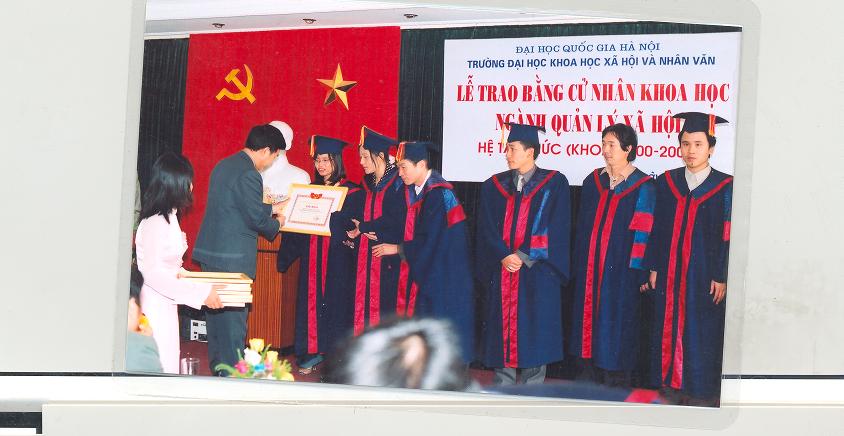



.JPG)

.JPG)



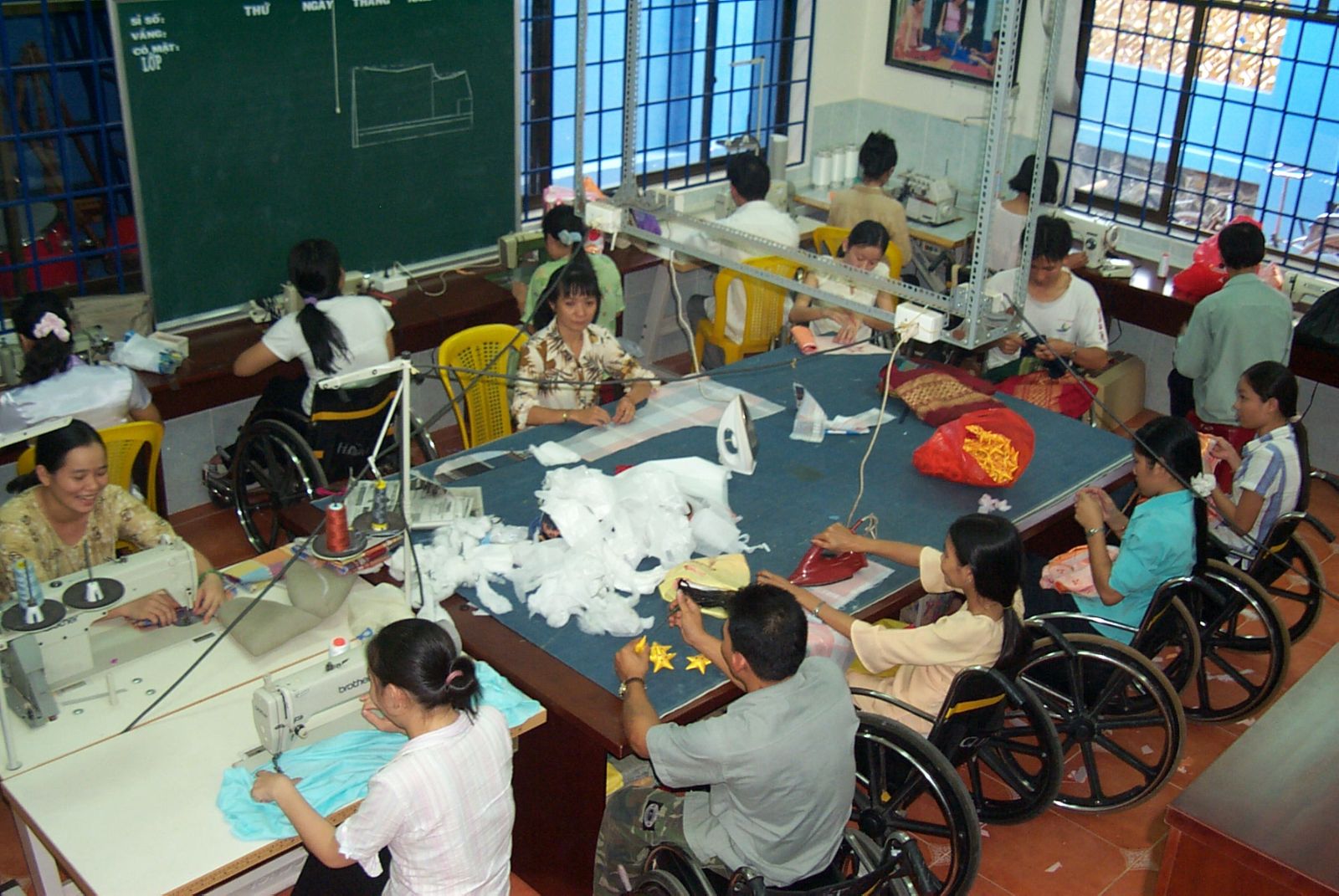



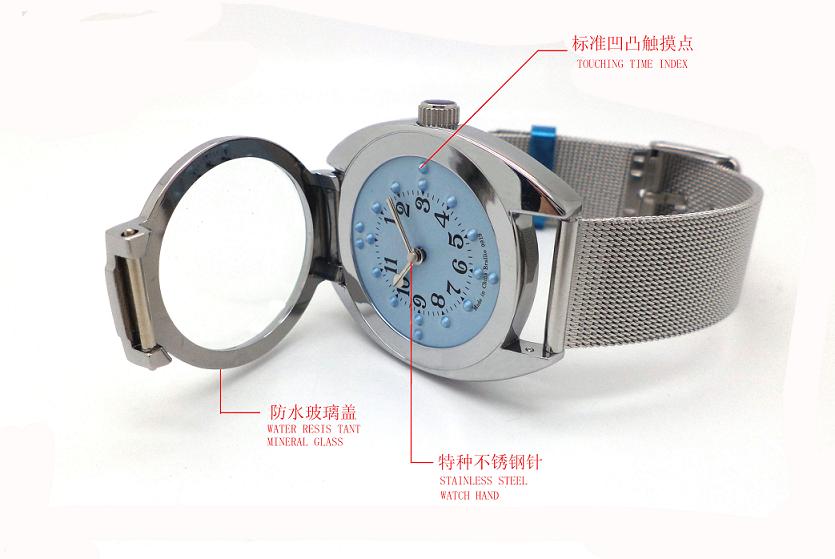
Bình luận